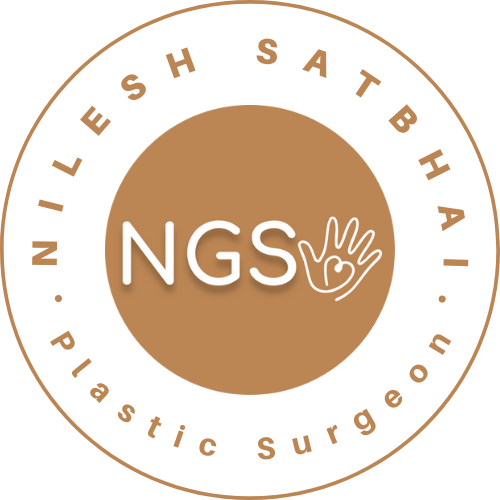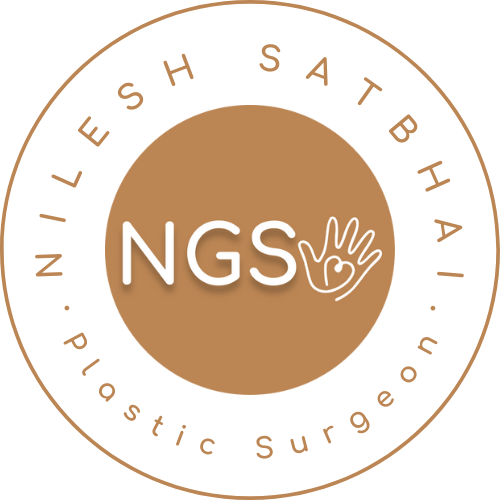Hand Reconstruction: Functional and Aesthetic Rehabilitation
Our hands hold so much importance in our lives. They perform functions of power, precision, and touch. Any damage or injury to the hand can severely impair its function and appearance. Therefore, it is essential to treat the hand properly to maintain its functionality and aesthetics.
Limb salvage and reconstruction
The main goal of limb salvage is to restore and maintain stability and ambulation. Reconstructive surgeries differ in each condition, such as meticulous debridement and early coverage in trauma, replacing lost functional units in cancer ablation that helps to improve vascularity.
Limb salvage depends on many factors and has certain indications. Limb salvage is cost-effective compared to amputation in the long run, which was the preferred treatment earlier. There is also a breakthrough with the introduction of microsurgery.
Advances in microsurgery, along with improvements in reconstructive surgical techniques over decades, have increased the scope of hand reconstruction. This provides the best functional and aesthetic results with minimal donor-site morbidity.
It not only allows replantation of amputated extremities but also allows the transfer of vascularised tissue to repair large soft-tissue defects.
Newer reconstructive options include:
- Perforator and propeller flaps
- Negative pressure wound therapy (NPWT)
- Endovascular procedures to improve limb perfusion
- Advances in skeletal fixation
- Ilizarov bone lengthening for bony defects and growth factors for osseous healing
A surgeon needs to know whether attempting salvage is better or not for the patient. The long course of limb salvage procedures, their impact on psychosocial and economic status, and the final functional outcome determine the decision-making and should be individualized.
Conditions of limb salvage
Various conditions can lead to the need for limb salvage, like:
- Trauma
- Stump salvage
- Cancer ablation
- Chronic infections
- Diabetic wound/non-healing ulcers
- Exposed prosthesis
Reconstructive strategy
Reconstruction aims to achieve long-term functional stability with minimal suffering in a short time. The following reconstructive strategy is often used after the decision to salvage:
- Skeletal stabilization
- Radical debridement
- Restoration of neurovascular continuity
- Ensuring adequate limb perfusion
- Repairing soft tissue
- Early wound coverage
Importance of functional rehabilitation
Functional rehabilitation combines various techniques to restore an injured athlete or worker to an optimal level of performance. Functional rehabilitation programs include strength, flexibility, and agility training, as well as training focused on coordination and movement of body parts to prepare the individual to return to full participation.
Functional rehabilitation is commonly used in sports medicine, but this approach can also benefit individuals returning to work and basic activities of daily living after trauma, nerve injury, or stroke.
How is functional rehabilitation performed?
As a first step, knowing the history of previous injuries, treatment, and recovery from injury can help. Understanding the patient’s goals and plans for resuming sports and activities is helpful. It is also important to know the patient’s current level of functioning, the presence of support systems, the use of medications or supplements, and which positions and movements reduce or increase pain.
A physical exam is performed to assess reflexes, posture, balance, gait, muscle control, body stabilization at rest and during exercise, range of motion of joints, and deficiencies or problems. The doctor will evaluate the cause of the original injury.
Functional rehabilitation requires functional diagnostics. The doctor reviews changes in athlete technique, range of motion, and secondary adjustments to other joints and muscles. Imaging tests such as X-rays, CTs, and MRIs can be used to clarify certain problems or injuries. Ultrasound images can also be used to assess joint and muscle movements.
The overall goal of functional rehabilitation is to train the patient in three-dimensional movements to prepare the whole body for a return to daily activities and sports. Rehabilitation should be initiated, and injury-specific rehabilitation should be performed from inflammation and pain control to motor recovery, muscle development, strength, and endurance to return to sport-specific activities. A team approach should involve a rehabilitator, physical therapist, athletic trainer, and strength and conditioning coach.
Additional resources for patients and families: Because treatment failure is a common consequence, patient families and caregivers are educated about the training necessary to restore full function and avoid complications.
The revolutionary concept of hand transplantation
Accidents involving hand injuries are common and in extreme cases result in amputation of the hand. An amputation is a significant event that can have a profound impact on an individual’s life. Most approaches to rehabilitation after hand amputation focus on providing a prosthesis to help the patient successfully cope with the challenges of everyday life.
However, for some individuals, even the most advanced prostheses do not provide sufficient functionality to carry out daily activities without overwork, fatigue, and old-fashioned frustration with prostheses. Because of these difficulties, some patients do not wear prostheses well enough to justify the expense and training required to use them.
For patients for whom prostheses are suboptimal, hand transplantation is a reasonable option to improve their lives. Hand transplantation can restore the look, feel, and function of a native hand.
Importance of aesthesis while planning surgery
Successful reconstruction today means improving hand function, aesthetic appearance, and psychological state.
The appearance of the hand is important to the patient because the hand is an integral part of human interaction, communication, and social integration. While normal hands are often overlooked, deformed or diseased hands attract unwanted attention with psychosocial consequences. Hands carry personal meaning and are important for human interaction and nonverbal communication. In addition, health can be inferred from the skin’s appearance, the soft tissue’s mass, and the joints’ relative positions.
Patients are aware of their appearance because their hands are visible to themselves and the public. For these reasons, patients have concerns about the appearance of their hands, even when faced with debilitating hand conditions. Recent literature indicates hand aesthetics are an important, measurable, and patient-reported outcome. In hand surgery, several outcome tools accurately measure functional outcomes, but aesthetics are often overlooked or inaccurately measured.
Functionality is undoubtedly a very important outcome in hand surgery, but surgeons are beginning to realize that their patients care about the aesthetics of their hands.
Aesthetic evaluation is a powerful way of demonstrating a patient’s perspective on surgery. Aesthetic considerations are now the most important area of results after function.
Cosmesis in hand surgery
Common hand features such as shape, proportions, and landmarks (such as palm folds) and typical clinical hand anatomy (such as joints and fingers) contribute to the appearance of a normal hand. Aesthetic hand quality is pretty subjective. The literature shows aesthetic hands look youthful and healthy, with long but well-proportioned fingers. Vein prominence, feminine or masculine features, skin texture, and pigmentation are characteristics of personal preference. Satisfaction or comfort with the appearance of the hand is highly individual and varies with age, gender, religion, culture, socioeconomic status, and hand discomfort.
Shape, proportion, length
Hand shapes often correspond to a person’s body type. There are many different types of hands.
Those with leptosome asthenia body type (frail, long-limbed, and narrow-chested) have long, elongated fingers. The hands of athletic types (muscular, with less body fat) are rough, wide, and balanced. Those with pyknic body type (short, squat, and rounded) have short, broad hands with tapering fingers.
The distinguishing feature of these hand types is primarily finger length. The effect of finger length on appearance is noticeable when the fingers are shortened by trauma. For this reason, many surgeons advocate finger replantation rather than amputation to preserve the aesthetics of the hand.
Hand surgery can be life-changing for patients and provide them with beautiful and functional hands can make all the difference in their quality of life.
Choosing a surgical team with skill and experience in hand surgery is essential.
Dr. Nilesh Satbhai is a surgeon in Mumbai with over 15 years of experience in hand surgery. If you suffer from any type of hand injury, Dr. Nilesh can provide you with the highest quality of care. Contact Dr. Nilesh Satbhai at 022-67670101 or plasticsurgerymumbai@gmail.com .






